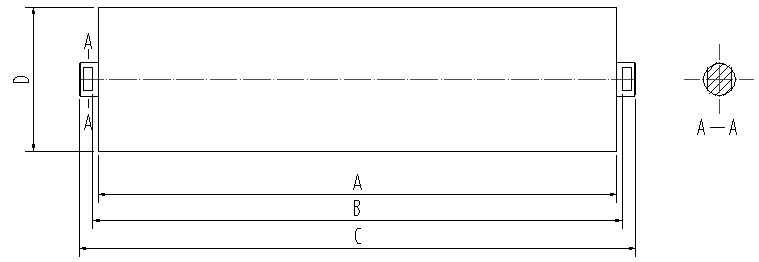 Afrikaans
Afrikaans  Albanian
Albanian  Amharic
Amharic  Arabic
Arabic  Armenian
Armenian  Azerbaijani
Azerbaijani  Basque
Basque  Belarusian
Belarusian  Bengali
Bengali  Bosnian
Bosnian  Bulgarian
Bulgarian  Catalan
Catalan  Cebuano
Cebuano  Corsican
Corsican  Croatian
Croatian  Czech
Czech  Danish
Danish  Dutch
Dutch  English
English  Esperanto
Esperanto  Estonian
Estonian  Finnish
Finnish  French
French  Frisian
Frisian  Galician
Galician  Georgian
Georgian  German
German  Greek
Greek  Gujarati
Gujarati  Haitian Creole
Haitian Creole  hausa
hausa  hawaiian
hawaiian  Hebrew
Hebrew  Hindi
Hindi  Miao
Miao  Hungarian
Hungarian  Icelandic
Icelandic  igbo
igbo  Indonesian
Indonesian  irish
irish  Italian
Italian  Japanese
Japanese  Javanese
Javanese  Kannada
Kannada  kazakh
kazakh  Khmer
Khmer  Rwandese
Rwandese  Korean
Korean  Kurdish
Kurdish  Kyrgyz
Kyrgyz  Lao
Lao  Latin
Latin  Latvian
Latvian  Lithuanian
Lithuanian  Luxembourgish
Luxembourgish  Macedonian
Macedonian  Malgashi
Malgashi  Malay
Malay  Malayalam
Malayalam  Maltese
Maltese  Maori
Maori  Marathi
Marathi  Mongolian
Mongolian  Myanmar
Myanmar  Nepali
Nepali  Norwegian
Norwegian  Norwegian
Norwegian  Occitan
Occitan  Pashto
Pashto  Persian
Persian  Polish
Polish  Portuguese
Portuguese  Punjabi
Punjabi  Romanian
Romanian  Russian
Russian  Samoan
Samoan  Scottish Gaelic
Scottish Gaelic  Serbian
Serbian  Sesotho
Sesotho  Shona
Shona  Sindhi
Sindhi  Sinhala
Sinhala  Slovak
Slovak  Slovenian
Slovenian  Somali
Somali  Spanish
Spanish  Sundanese
Sundanese  Swahili
Swahili  Swedish
Swedish  Tagalog
Tagalog  Tajik
Tajik  Tamil
Tamil  Tatar
Tatar  Telugu
Telugu  Thai
Thai  Turkish
Turkish  Turkmen
Turkmen  Ukrainian
Ukrainian  Urdu
Urdu  Uighur
Uighur  Uzbek
Uzbek  Vietnamese
Vietnamese  Welsh
Welsh  Bantu
Bantu  Yiddish
Yiddish  Yoruba
Yoruba  Zulu
Zulu conveyor idler roller design
Conveyor Idler Roller Design Key Considerations and Principles
Conveyor systems are integral to many industries, facilitating the efficient movement of materials from one location to another. Among the various components that make up these systems, the conveyor idler roller plays a crucial role in maintaining the efficiency and reliability of material transport. This article will explore the essential aspects of conveyor idler roller design, emphasizing its significance, types, and engineering considerations.
Importance of Conveyor Idler Rollers
Conveyor idler rollers support the conveyor belt and play a pivotal role in ensuring smooth operation. They reduce the friction between the belt and the conveyance system and help in maintaining the correct alignment of the belt. Moreover, properly designed idler rollers minimize wear on the belt, extend its lifespan, and improve energy efficiency by reducing rolling resistance. Ultimately, the design of these rollers impacts the overall performance of the conveyor system and the cost of operations.
Types of Conveyor Idler Rollers
There are several types of conveyor idler rollers, each designed for specific applications
1. Flat Idler Rollers These are the most common type used in standard belt conveyors, providing a flat surface for belt support.
2. Trough Idler Rollers Designed with a slight angle, these rollers support the belt in a trough shape, allowing for the effective transport of bulk materials.
4. Self-Aligning Idler Rollers These rollers minimize belt distortion and ensure the proper tracking of the conveyor belt, which is essential for maintaining operational efficiency.
conveyor idler roller design

5. Return Idler Rollers Positioned on the return side of the conveyor belt, they support the belt as it returns to the loading point, thereby ensuring that the system remains balanced.
Engineering Considerations in Idler Roller Design
Designing effective conveyor idler rollers requires a comprehensive understanding of various engineering principles. Key considerations include
1. Material Selection The choice of materials for idler rollers is critical. Commonly used materials include steel, polyethylene, and rubber. The selected material should offer high strength, resistance to wear, and durability under environmental stressors.
2. Roller Diameter and Width The diameter and width of the roller significantly influence the carrying capacity and the friction of the system. Larger diameters generally reduce rolling resistance, while wider rollers can carry more material.
3. Bearing Configuration Properly designed bearing systems are necessary for minimizing friction and prolonging the lifespan of the rollers. Bearings must be selected based on load requirements and speed of operation.
4. Sealing and Protection Idler rollers should be sealed adequately to prevent contaminants like dust and moisture from entering the bearing housing. Effective sealing ensures longevity and operational reliability.
5. Maintenance and Accessibility A well-designed idler roller system should allow for easy maintenance and inspection. Consideration of access points will facilitate timely interventions, reducing downtime and operational costs.
Conclusion
In conclusion, the design of conveyor idler rollers is a critical aspect of overall conveyor system efficiency and reliability. By considering the types of rollers, material selection, engineering principles, and maintenance accessibility, engineers can create idler roller systems that optimize operations across diverse industrial applications. As technology advances, newer design methodologies and materials will undoubtedly continue to enhance the performance and lifespan of conveyor idler rollers, further supporting the growing demands of modern industry.
-
Taper Centering Idler Set for Conveyor SystemsNewsJun.25,2025
-
Small Idler Rollers for Industrial ConveyorsNewsJun.25,2025
-
Guide Training Idler Set for Conveyor MaintenanceNewsJun.25,2025
-
Friction Offset Idler Set for Industrial UseNewsJun.25,2025
-
Double-Center-Roller Idler AlignmentNewsJun.25,2025
-
Channel Inset Impact Troughing Idler Set for Heavy LoadsNewsJun.25,2025





























